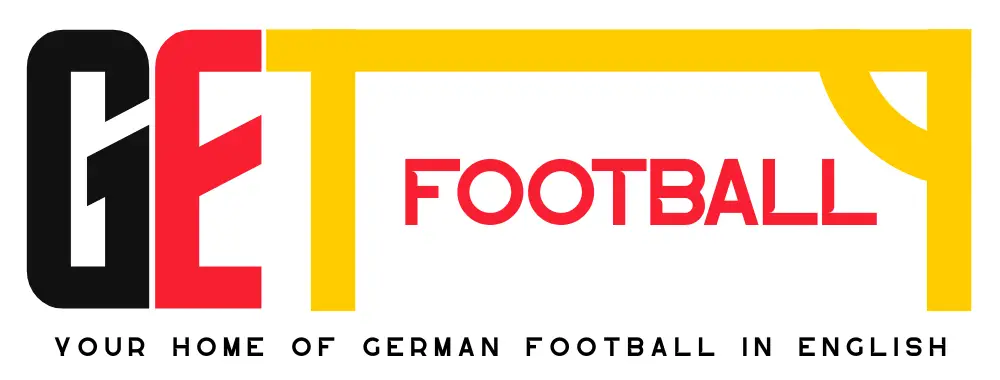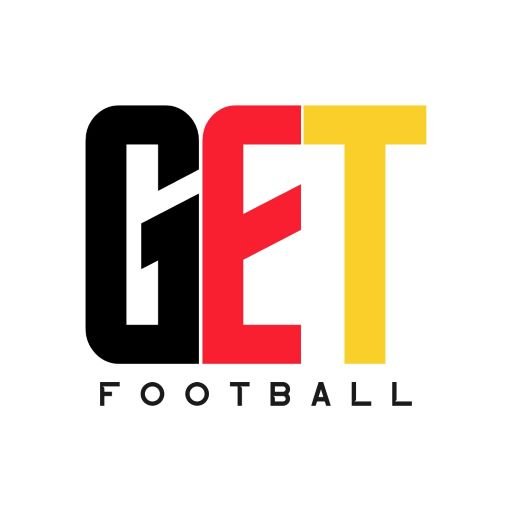As the first touch of their 20 year-old local boy sailed through the warm Munich air and dipped, almost improbably, under the crossbar to all but clinch the Champions League, Dortmund fans would have been hard pressed not to believe in destiny.
As Lars Ricken lept the hoardings, wheeling away in celebration, even he himself having done the thing, must for a moment have felt as if fate had briefly taken control to make the improbable very much probable.
As Ottmar Hitzfeld’s side lifted the trophy in the then-home of their now-rivals Bayern Munich, and etched their name, which 25 years later remains something of an outlier, on the list of Europe’s great Champions, it seemed as though fortune had transpired to make it all happen.
But like the iconic goal that secured BVB’s European triumph, there was far more than luck at play, far more method than madness behind one of the greatest successes in German football history.
So how did a side who, less than a decade previously had been nothing more than a mid-table Bundesliga also-ran, end up conquering Europe?
There was certainly some good-fortune at play, or rather a blessing in disguise. Victory in the 1989 DFB Pokal final over Werder Bremen, where they overcame an early strike from one Karl-Heinz Riedle (more on him later), triggered the belief that greater things were in store at BVB.
But it was the unfortunate 2nd place finish to VfB Stuttgart, on goal difference no less, in the 1991-92 Bundesliga, which actually ended up sparking Dortmund’s most famous moment.
A spot in the 92-93 UEFA Cup, while still at its prestigious peak, was still a relative booby-prize in comparison to a place in the inaugural Champions League.
Stuttgart’s first round saw them off for a glamour tie with English Champions Leeds. By contrast, Dortmund were paired with Floriana in Malta. But Stuttgart fell at the first hurdle, while the yellow-blacks went on a run that saw them reach the UEFA Cup final, where they would meet (and lose quite soundly to) Juventus.
While the players once again faced the disappointment of runners-up medals around their necks, alongside their experience the club itself benefitted from the European run with an enormous financial windfall, and it was on that foundation that the victory in Munich was primarily built.
With the coffers full, Dortmund’s ambition soared. A glut of highly prized stars, German and foreign alike, soon streamed into the club for record fees. Future Ballon D’Or winner Matthias Sammer and Karl-Heinz Riedle were tempted back from spells in Italy, at Inter and Lazio respectively. Andreas Möller, who had already played 75 games in the Bundesliga in yellow in a previous spell at the club, came back to home soil from Juventus alongside Brazilian Júlio César, followed by Jürgen Kohler in 1995. All three had taken part in Juve’s dismantling of BVB in 1993. Portuguese midfielder Paulo Souza would make the same journey from Turin in the summer of 1996, having just won the Champions League himself.
The rapid influx of talent was followed nearly as quickly by a Bundesliga title in 1995, the club’s first national championship in almost 40 years, and the first in the Bundesliga era. Dortmund were top of the mountain in Germany. Was Europe to follow?
A first tilt at the Champions League ended respectably, if comprehensively, at the quarter final stage to reigning champions and eventual repeat finalists Ajax. To get there, Dortmund had tangled once again with Juventus, who themselves would be crowned kings of Europe that season, in the group stage. The first encounter ended in a familiar 3-1 defeat at home, but Hitzfeld’s side brought a 2-1 win back from the Stadio delle Alpi. The proof that the Old Lady were not invincible would remain in Dortmund minds.
A second Bundesliga in a row led to a second bite of the European cherry. The story so far would suggest that everything was set up perfectly for the ultimate glory that was to follow. But that could not have been further from the case.
Injuries ravaged the squad throughout the campaign. Sammer was barely able to train, missing several vital Champions League games including both legs of the semi final. Paulo Sousa missed a huge chunk of the winter months, and Júlio César only made it to the Autumn before being ruled out for the rest of the season.
Progression through the competition’s early stages then was built on the backs of lesser known squad members such as René Tretschok and Wolfgang Feiersinger. Ottmar Hitzfeld later admitted that it was the most difficult decision of his career to leave Feiersinger out of the squad for the final, as he couldn’t afford the luxury of a second sweeper on the bench once Sammer had returned to fitness.
The division between the team’s superstars and humble supporting cast wasn’t only restricted to the decisions of the manager. Alongside their problems getting the players on the pitch, there were strong reports of problems with the players getting along off it.
Dortmund faced rumours of cliques and dressing room disharmony all the way up until the eve of the final itself. Not without basis, it seems. As quoted in Uli Hesse’s Building the Yellow Wall, squad member Knut Reinhardt had revealed: “There was a class division in that squad. One clique included the players who had seen action in Italy. They would sometimes speak Italian during training just to rile the foot soldiers”.
Despite the obstacles, Dortmund’s progress to the final was largely straightforward, sharing dominance with Atlético Madrid in a group also containing Steaua Bucharest and Polish side Widzew Łódź.
Auxerre followed in the quarters, and were dispatched just as easily with a 4-1 aggregate scoreline. Even the semi-final against Manchester United initially appears to have been a breeze at first glance. But having taken a 2-0 aggregate lead in the early stages of the second leg, BVB faced an onslaught at Old Trafford. In one of the most famous moments of the campaign, Eric Cantona looked certain to pull one back with keeper Stefan Klos scrambling and Jürgen Kohler down on his back in the 6 yard box. In a moment that defied logic, Kohler stuck out a desperate leg to deny Cantona and earn himself the nickname Fussballgott among the Dortmund faithful.
And so on to the final. It seemed almost poetic that Dortmund would play the biggest fixture in their history at the beautiful and unique Olympiastadion in Munich, but not against Bayern, the team they had set their sights on overturning domestically.
Instead, laying in wait was once again Juventus, the side that had proven a stumbling block more than once in the previous few years, and that the yellow-blacks had clearly sought to emulate with so many of their biggest signings, and their focus on European adventures that season.
As if facing the reigning European Champions wasn’t daunting enough, the Bianconeri had dipped into the transfer market themselves since the last meeting between the two, revamping their strike force with Christian Vieri and Alen Bokšić, who were accompanied by one Zinedine Zidane. The trio were on the cusp of guiding champions-elect Juve back to the Serie A title.
With Dortmund only able to finish 3rd in their league campaign, it was the Italian side undoubtedly arriving in Bavaria in a better mood.
Although these factors certainly informed the game’s early stages, with Marcello Lippi’s side making an assured start, none of that early pressure paid off. Shortly before the half hour mark, a Dortmund corner was punched out by Angelo Peruzzi, and fell to Paul Lambert on the right edge of the box.
The Scotsman, signed from Motherwell on a free transfer, had impressed in a UEFA Cup tie against his new side a couple of years before. Impressing them enough to sign him was one thing, but even the Dortmund brass could not have anticipated the short but powerful impact he would have. Lambert would earn the man of the match that night, shackling Zidane for much of the 90 minutes, but it was this moment that was his most crucial.
Lambert swung the ball back in where it was chested down by Riedle, the forward reacting quickly to smash the opener home.
Five minutes later, the lead was doubled. Another corner from Möller was floated in, and this time Riedle was far more direct, heading a bullet past Peruzzi. The striker later claimed to have dreamed of scoring one goal with his left and another with his head, but it would be a wonder if these two goals were exactly what his subconscious had come up with.
As mentioned in Building the Yellow Wall, the training facilities back at the Westfalenstadion were not yet of peak quality. Quite ironically, Ottmar Hitzfeld’s team had just scored two of the most important goals in their history from corners, even though the Austrian manager had spent much of the season unable to coach set pieces properly because of the tiny practice pitch at his disposal.
Having had to deal with the stresses of defending a two-goal advantage in the previous round, Dortmund prepared for another siege. They certainly got one, and definitely rode their luck at times. In the 10 minutes between Riedle’s second and half time, Zidane struck the post and Vieri had a goal disallowed for hand-ball.
Juventus responded at half time by throwing on Alessandro Del Piero, quite an ace to have up your sleeve, and before long the move paid off. The youngster grabbed one of the great forgotten goals in Champions League final history, halving the Dortmund lead with a cheeky backheel, and the comeback seemed to be on.
Dortmund however, had an ace of their own.
Lars Ricken’s instant impact on this game has been elevated to such an extent that the tale is almost told as if this was the first touch of his entire career, not only of the match itself. In actuality, the youngster had already made over 70 league appearances for the club, and that season alone had scored 3 goals already in the Champions League. He was unlucky, and disappointed, not to be starting the final.
But sitting on the bench for 70 minutes that night did afford him one big advantage. He was able to watch for weaknesses in the Juventus rearguard, specifically Peruzzi’s tendency to stray from his line. In the player’s own words ahead of the 20th anniversary of the match: “There was one point in the first period when he was standing about 30 metres in front of his goal-line. When I saw that from the bench, I said that I would just blindly smash the ball towards goal with my first touch.”
Within 30 seconds of coming on, Ricken had the opportunity to do just that, but his big moment ended up being far more graceful than he had imagined from the sidelines. Set free down the right by Möller, Ricken’s lob hung in the air for an almost sarcastically long time before nestling comfortably in the back of Peruzzi’s net.
The third goal killed Juventus’ resolve, and Dortmund even ended the game with the luxury of bringing on captain Michael Zorc in the final minute to lift the trophy. The scenes at full time, with Dortmund parading the European Cup in their cult-classic fluorescent shirts, remain some of the most iconic images in the competition’s history.
Darker times were to follow for BVB. Hitzfeld left in the summer and financial troubles led to a low period in the early 2000s. But 1997’s success endures not just in the Ruhr region, but in European football as a whole. As well-funded as it was, Dortmund’s triumph appears in the records as a sort of bridge between traditional and modern football. The club remain only the second most recent first-time winners of the competition, a quarter of the century later, and following Porto and Chelsea’s more recent wins, are the most recent winners to have only one title.
While the club have returned as a force both at home and on the continent since, and returned to the final under Jurgen Klopp in 2013, neither they nor the rest of Europe will ever forget that balmy night in Munich.










